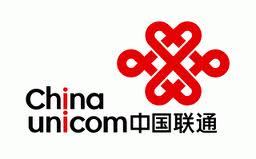 All new homes must be equipped with fiber broadband connections if they are located in a county or city where fiber service is provided, according to a new mandate from China’s Ministry of Industry and Information Technology.
All new homes must be equipped with fiber broadband connections if they are located in a county or city where fiber service is provided, according to a new mandate from China’s Ministry of Industry and Information Technology.
The Chinese government has learned turning over national broadband policy to self-regulating providers reluctant to invest in super-fast broadband service is a mistake other countries will pay for dearly as they fall behind in broadband rankings and digital opportunities only available to the broadband “well-connected.”
Now the government has taken measures to level the playing field for ordinary consumers and businesses who will share the right to equal service from various telecommunications companies over the country’s state-of-the-art fiber to the premises network.
The mandate takes effect April 1, and is anticipated to bring explosive growth in domestic fiber broadband, according to the China Daily.
With an open fiber network, expensive network redundancy and cherry-picking lucrative customers are reduced or eliminated, allowing the country to deploy fiber more rapidly in areas providers would typically deem “unprofitable.”
The new fiber policy will mean at least 40 million Chinese homes will have fiber broadband by 2015. China Unicom (Hong Kong) Ltd., the nation’s second largest telecom company, is among the most aggressive providers, adding 10 million Chinese families to its fiber network in the last year alone.
The bare minimum fiber speeds for Chinese families will be 4Mbps in rural areas, 20Mbps in urban zones, with 95 percent of the country blanketed with broadband within a few years.

The Chinese government’s broadband plan is laser-focused on fiber optics, with satellite and wireless service filling in rural coverage gaps. The country sees 21st century broadband as a national priority and is well on its way even as North American broadband companies are pulling back on fiber deployments. Instead, American and Canadian companies are incrementally upgrading inferior copper wire and cable HFC broadband networks. The Chinese government does not believe these older technologies will suffice.
Optical fiber manufacturers who assumed telecom companies in North America would continue aggressive fiber deployments and ramped up optical fiber production as a result have taken a financial beating, slashing prices to reduce inventory. The price for fiber cable has dropped at least 90 percent in the past decade. The Chinese government has even resorted to tariffs to stop American and European manufacturers from dumping fiber cables and equipment at rock bottom prices to the detriment of its domestic manufacturers.
China remains the largest driver in global fiber demand. In 2011, China accounted for about 50% of the global demand, reaching nearly 60 percent by the end of 2012.


 Subscribe
Subscribe